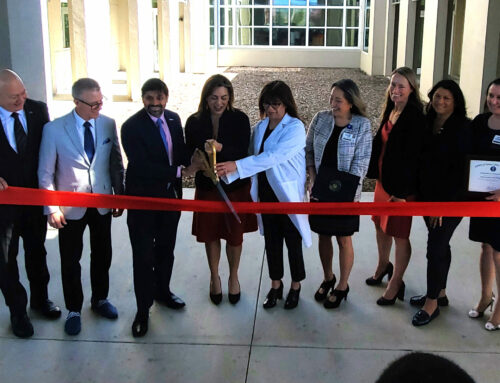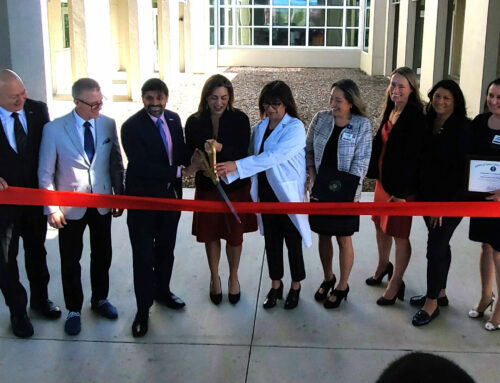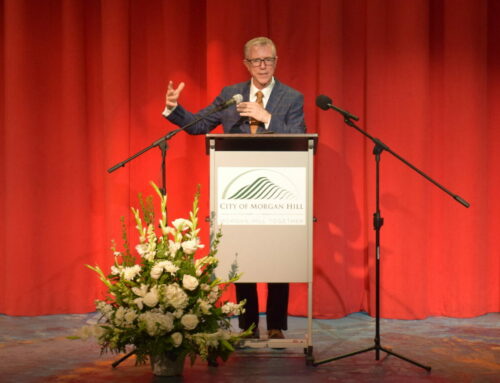Mammograms will be done on state-of-the-art equipment
Published in the October 11 – October 24, 2017 Issue of Morgan Hill Life
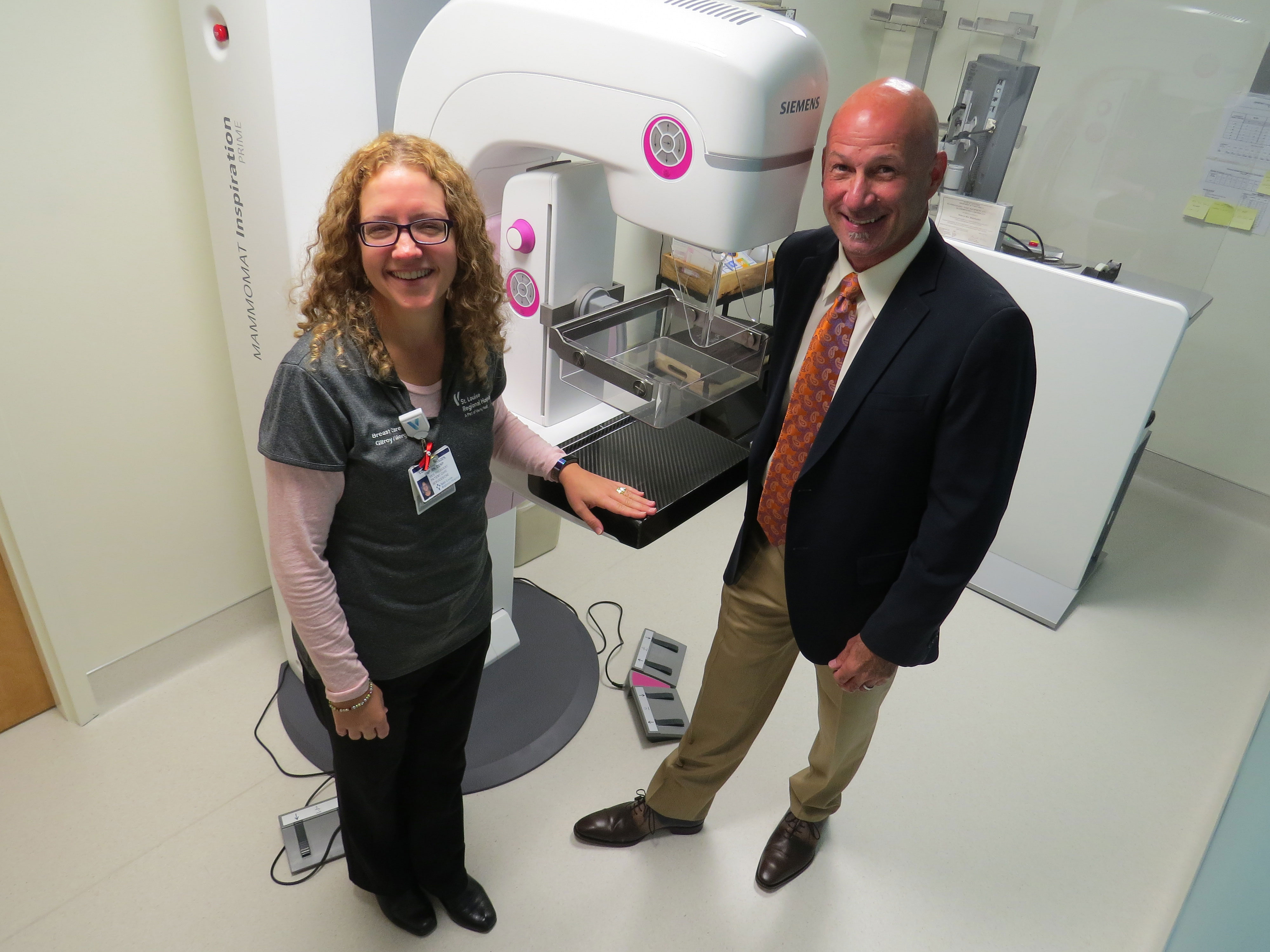
Photo by Marty Cheek
Lori Katterhagen, vice president Patient Care and Clinical Services, and Rich Porzio, St. Louise Hospital radiologist, with the new screening machine.
As Breast Cancer Awareness Month, October is an occasion to consider that more than 16,000 women in Gilroy and Morgan Hill need a mammogram each year. Many of them come from low-income families without insurance.
About 960 of these women will receive a free exam thanks to the $96,000 raised in the Fund a Mammogram Campaign by the St. Louise Regional Hospital Foundation at its Harvest Moon Gala last month.
The mammograms will be done on state-of-the-art digital X-ray equipment in two Breast Care Centers run by the Verity Medical Foundation. One is at the DePaul Health Center in Morgan Hill. The other center, which is recently renovated and includes biopsy capability, is at the St. Louise Regional Hospital in Gilroy. Both celebrated their openings with ribbon cutting ceremonies last week.
“The gala did a great job,” said Dawn Bussey, marketing and communications director for the Verity Medical Foundation. “They expected to raise $50,000, but thanks to the generosity of donors, they raised nearly twice that.”
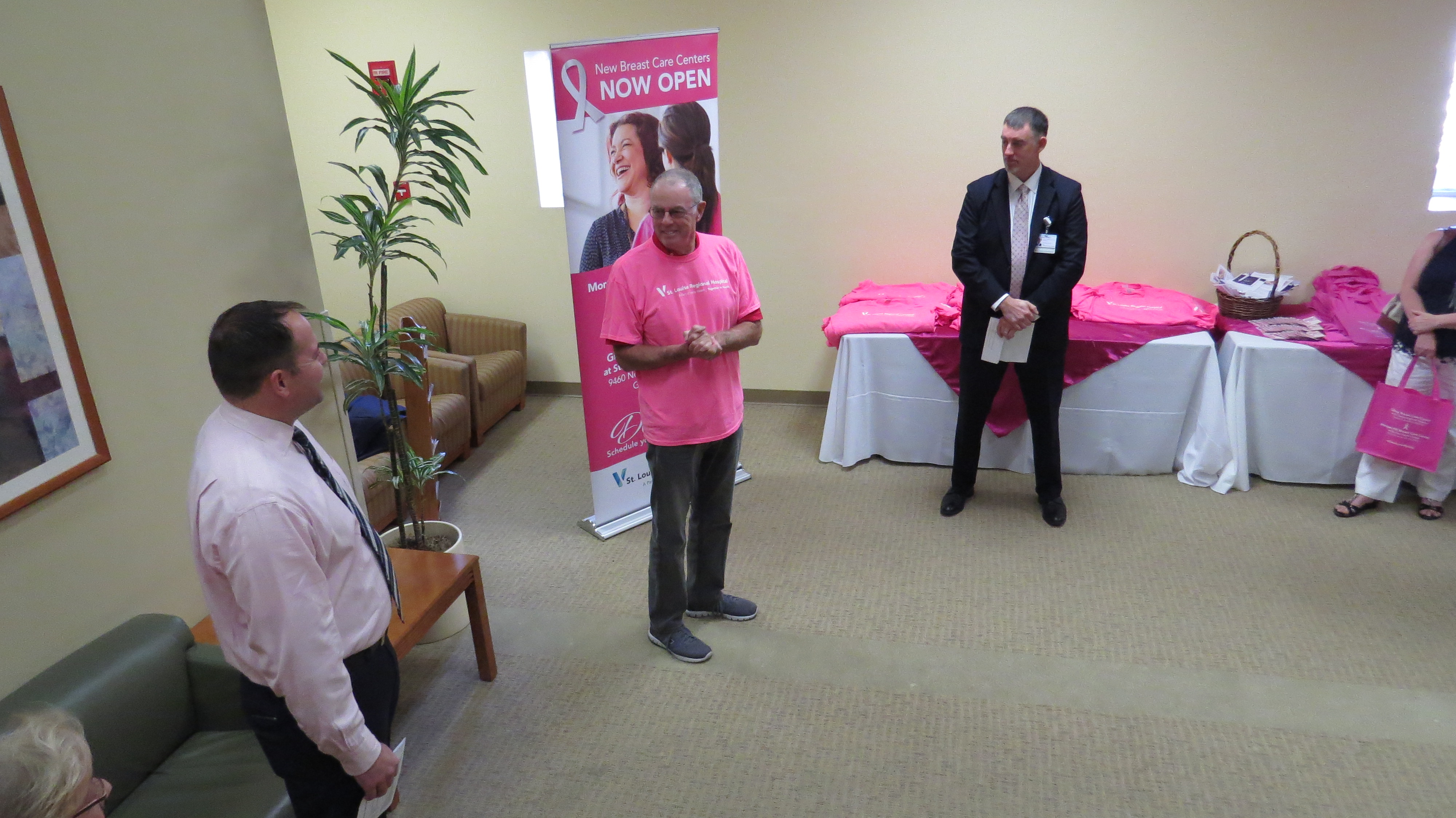
Morgan Hill Mayor Steve Tate at Breast Care Center ribbon cutting.
Photo by Marty Cheek
Detecting breast cancer in its early stages enables women to gain a better chance of survival with less treatment and pain medication, she said. It also helps save money compared to treatment for more advanced cases of the disease. At a cost of about $100 for each mammogram, many uninsured women in the South Valley will be better able to survive a disease that impacts one of seven women in the United States.
The DePaul center includes a small, spa-like room for women to prepare for the examination and wait for the technician to call them into the adjoining room, said Lori Katterhagen, vice president of Patient Care and Clinical Services.
The room is furnished with a cozy chair. A Zen-like picture and mellow wall colors help create a space that reduces the stress. Women can secure their belongings in a locker, one less thing to worry about.
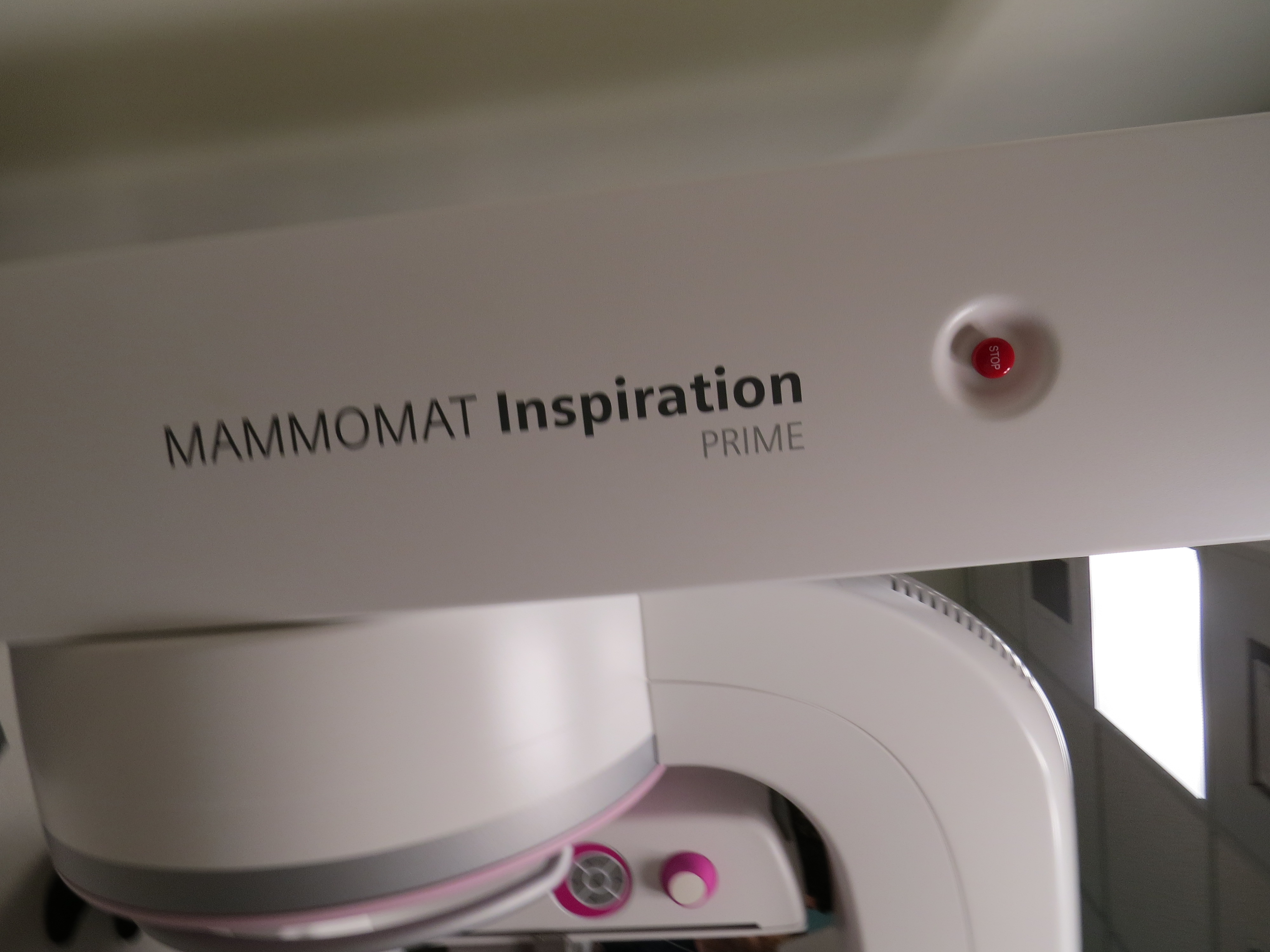
Photo by Marty Cheek
“The intent is for women to have a more comfortable environment,” she said. “This isn’t an easy procedure to have, and so we wanted them to feel comfortable being here by making it as spa-like as we can. This can be a very stressful time, especially if they feel a lump, so they’re already stressed to the max. We don’t want to put them on a cold table.”
The women enter an examination room which has the mammogram screening machine. The Siemens Mammomat Inspiration Prime looks nonthreatening in its pretty pink and white color scheme. The entire exam is set up so that women can be in and out of the process in less than 30 minutes, Katterhagen said.
As the machine compresses the breast, a sensor flashes when it reaches an adequate level so that the breast doesn’t feel as if it will burst, a common challenge with other mammogram machines, she said.
“The machine senses the pressure so that you can get a good image without feeling too much discomfort, so that’s a real bonus for us,” she said. “It’s cutting-edge technology for the South Valley. It actually delivers, as an extra bonus, 30 percent less radiation.”
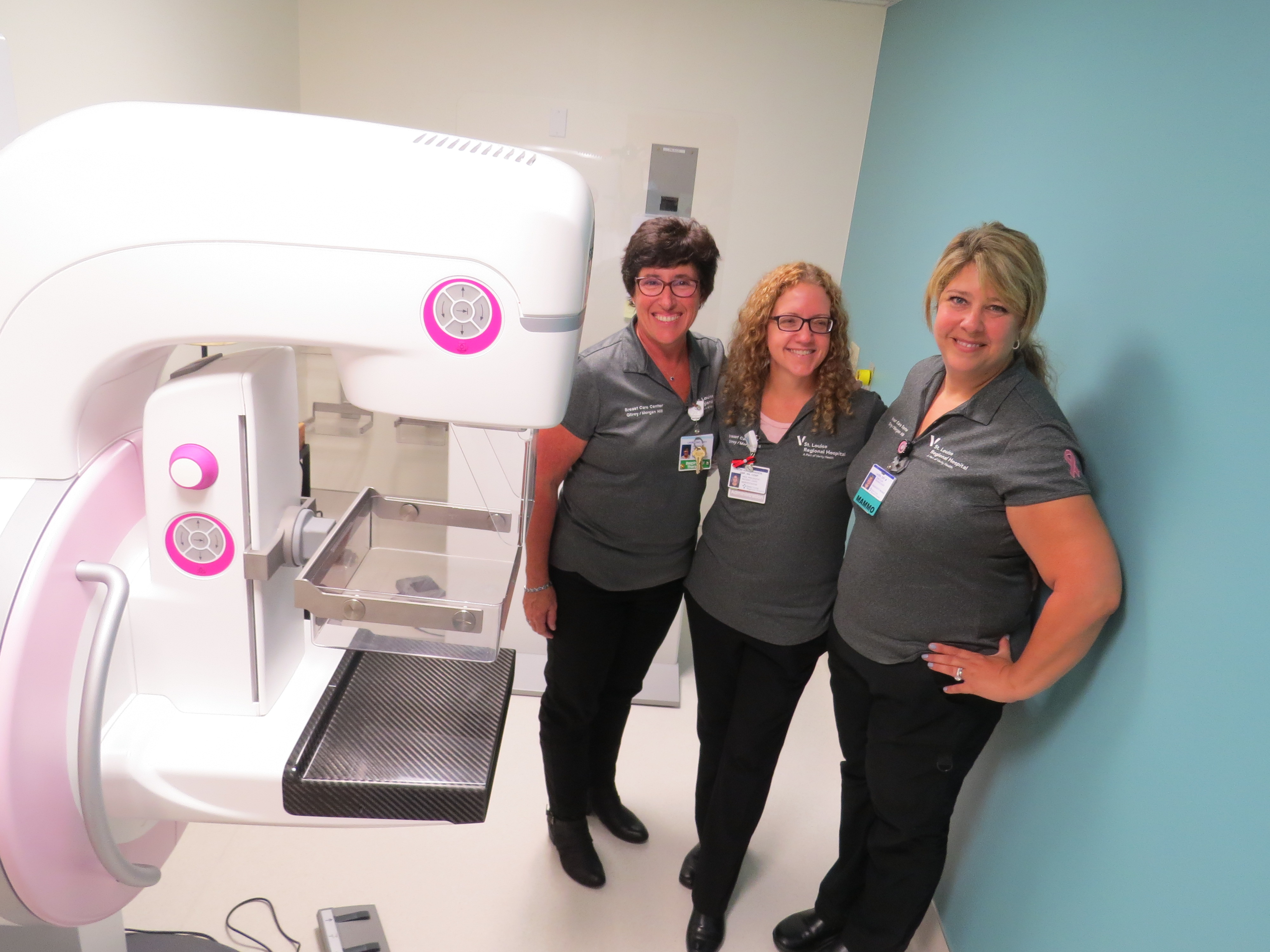
Photo by Marty Cheek
One in seven women will face the threat of breast cancer, said Rich Porzio, radiologist for St. Louise. Getting more women to get exams on a regular basis will help reduce the toll of the disease on families. Often, in the early stages, it’s difficult for women to feel the lump because it’s too small for their detection.
“The bottom-line is when it’s detected early, their prognosis is better,” Porzio said. “The main thing is your prognosis goes way up the earlier you catch it. You catch it late, your prognosis goes down. On a mammogram, the cancer looks like little grains of sand, so you’re not going to even feel that. You get a little cluster of ‘sand,’ you really need to worry about that.”
The American Medical Association and the American Cancer Society have issued guidelines that women older than 40 should get mammograms regularly, and with a history of breast cancer, should get them sooner, said John Hennelly, CEO of St. Louise. With the new Breast Care Centers, more women’s lives will be saved from early cancer detection.
“We needed to make that available and accessible,” he said. “Although a mammogram can’t prevent cancer, it detects changes in the breast early, up to two years before a patient can feel (a lump).”
At the Oct. 3 ribbon cutting for the DePaul’s Breast Cancer Center, Morgan Hill Mayor Steve Tate wore a pink T-shirt commemorating October as Breast Cancer Awareness Month. He said he was pleased with the new center’s opportunity for addressing women’s health care needs.
“This is just another indication of where we’re going,” he said. “We’re getting more and more things in here and we’re going to have a lot more of these celebrations in the future.”



